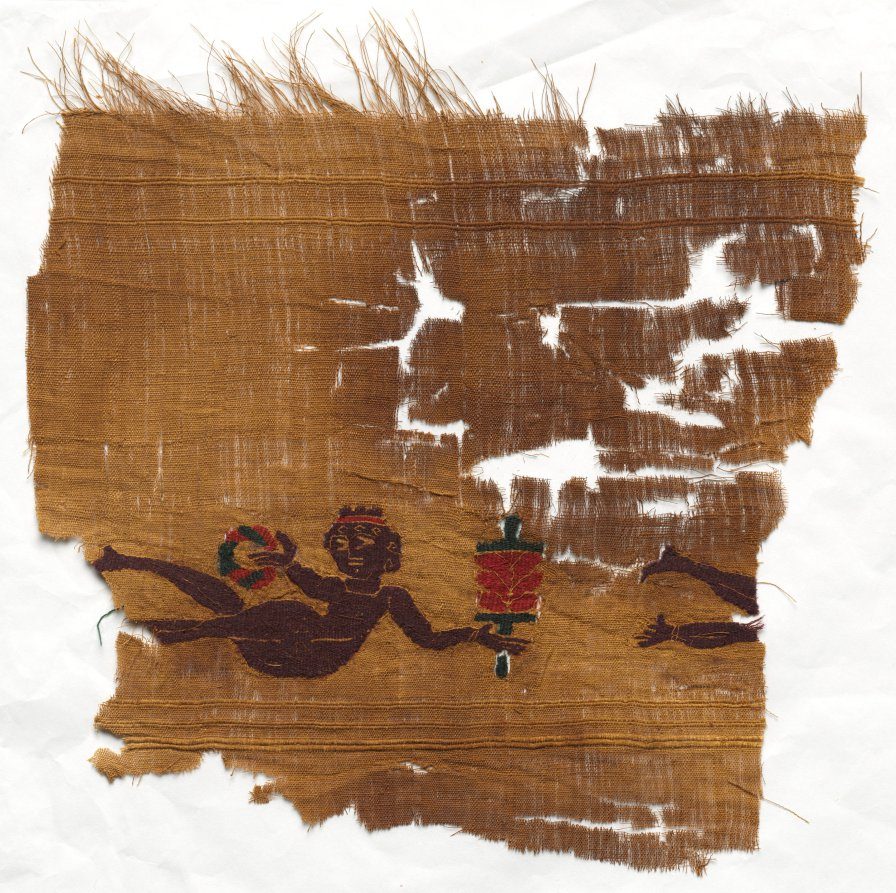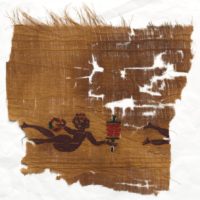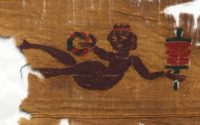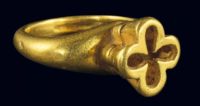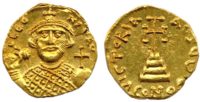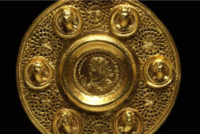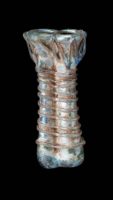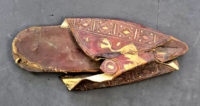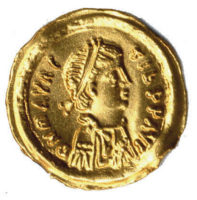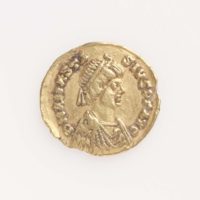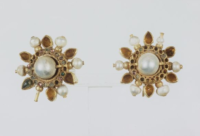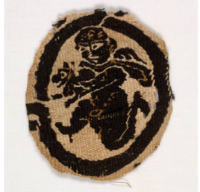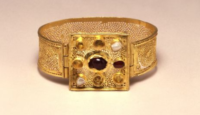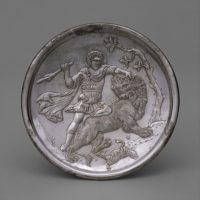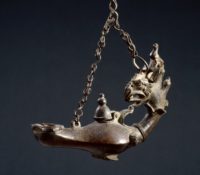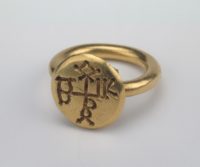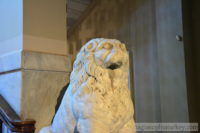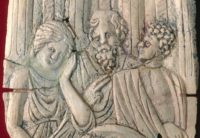Fragment of a Curtain, Period: Early Byzantine; circa: 5th century. Made in: Egypt, Materials: tabby weave, inwoven tapestry ornament; wool and linen. Dimensions: 23.2 x 22.9 cm (9 1/8 x 9 in.). The Cleveland Art Museum Hours: Tuesdays, Thursdays, Saturdays, Sundays 10:00 a.m.–5:00 p.m. Wednesdays, Fridays 10:00 a.m.–9:00 p.m. Closed Mondays.
Ring with cross-shaped quatrefoil calyx bezel. Materials: gold. Period: Early Byzantine; circa: 6th-7th century. The Benaki Museum of Greek Culture is housed in one of the most beautiful neoclassical-style buildings in Athens, near the National Garden and the Hellenic Parliament.
Censer; Period: Early Byzantine; circa: 6thc.-7thc.; Found: Syria. Materials: copper alloy. Dimensions: Diameter: 79 millimetresLength: 475 millimetres (suspension unit)Height: 61 millimetres. British Museum is closed 24, 25 and 26 December and 1 January, but is open every other day of the year. Fast facts about the British Museum: Founded: 1753, Collection size: 8 million objects, Oldest object in the collection: Stone chopping tool (nearly 2 million years old).
Gold coin. Ruler: Leontius II; Period: Early Byzantine; circa: 695-698; Minted in: Rome. British Museum is closed 24, 25 and 26 December and 1 January, but is open every other day of the year. Fast facts about the British Museum: Founded: 1753, Collection size: 8 million objects, Oldest object in the collection: Stone chopping tool (nearly 2 million years old).
Circular Pendant with Double Solidus of Constantine I, Period: Early Byzantine, Materials: gold. The museum is open to the public Tuesday through Sunday, 11:30 a.m.–5:30 p.m., except for federal holidays.
Double Costmetic Tube (balsamarium). Period: Early Byzantine, circa: 5th–6th century A.D. Dimensions: Height: 11.6 cm (4 9/16 in.) Material: Glass. The MFA is open 7 days a week. Monday and Tuesday 10 am–5 pm, Wednesday–Friday 10 am–10 pm, Saturday and Sunday 10 am–5 pm.
Slipper; leather; with pointed toe and thick sole with gilt borders on the upper part and the figure of an animal. Culture: Coptic. Period: Early Byzantine; circa: 4thC-6thC; Made in: Egypt. Length: 262 millimetres. British Museum is closed 24, 25 and 26 December and 1 January, but is open every other day of the year. Fast facts about the British Museum: Founded: 1753, Collection size: 8 million objects, Oldest object in the collection: Stone chopping tool (nearly 2 million years old).
Tremissis of Emperor Maurice Tiberius, Period: ca. 582–602, Early Byzantine, Material: Gold. On view at The Met Fifth Avenue in Gallery 301. The Metropolitan Museum of Art (New York) is one of the world’s largest and finest art museums. Its collection includes more than two million works of art spanning five thousand years of world culture, from prehistory to the present and from every part of the globe. Public Hours: 10:30 a.m.–5:30 p.m. Open seven days a week.
Textile Fragment, Materials: silk and cotton. Period: Middle Byzantine, circa: 8thc-9thc. Rectangular panel of woven silk sen onto a larger cotton cloth of irregular, roughly rectangular shape; two hunters on horseback, in a round frame with floral ornament. British Museum is closed 24, 25 and 26 December and 1 January, but is open every other day of the year.
Tremissis of Theodoric in the name of Anastasius I, Period: Early Byzantine; circa: 491–518 A.D. Minted: Kingdom of the Ostrogoths, Ravenna. Materials: Gold. The Museum of Fine Arts, Boston is open 7 days a week. Monday and Tuesday 10 am–5 pm, Wednesday–Friday 10 am–10 pm, Saturday and Sunday 10 am–5 pm.
Pair of Earrings, Materials: Gold, Gems, Pearls and Garnets. Period: Early Byzantine, circa: early 5th century. The museum is open to the public Tuesday through Sunday, 11:30 a.m.–5:30 p.m., except for federal holidays.
Fragment with Running Figure, Materials: tapestry; linen and wool, Period: Early Byzantine circa: 500s. The Cleveland Art Museum Hours: Tuesdays, Thursdays, Saturdays, Sundays 10:00 a.m.–5:00 p.m. Wednesdays, Fridays 10:00 a.m.–9:00 p.m. Closed Mondays.
Fragment of a Tunic, Period: Middle Byzantine circa: first half of 7th century, Made in: Egypt. Materials: tabby weave with inwoven tapestry ornament, linen and wool. Overall: 26.1 x 74.3 cm (10 1/4 x 29 1/4 in.). The Cleveland Art Museum Hours: Tuesdays, Thursdays, Saturdays, Sundays 10:00 a.m.–5:00 p.m. Wednesdays, Fridays 10:00 a.m.–9:00 p.m. Closed Mondays.
Bracelet with Jewelled Clasp, Period: Early Byzantine, Date: -circa-Second half 4th Century (possibly 360-80). Materials: gold and gems. The museum is open to the public Tuesday through Sunday, 11:30 a.m.–5:30 p.m., except for federal holidays.
Plate with David Slaying a Lion, Period: Early Byzantine, circa: 629–630, Materials: Silver, Made in Constantinople, The Metropolitan Museum of Art (New York) is one of the world’s largest and finest art museums. Its collection includes more than two million works of art spanning five thousand years of world culture, from prehistory to the present and from every part of the globe. Public Hours: 10:30 a.m.–5:30 p.m. Open seven days a week.
Lamp for suspension; Period: Early Byzantine. circa: 4thc-5thc. Materials: Brass; the curved handle in the shape of the head and neck of a crested dragon holding an apple in its mouth, and bearing on its head a sacred monogram surmounted by a dove. Subjects:leaf, fruit, dragon and bird. Found Place: Herculaneum, Naples.
Dimensions: Length: 21 centimetresHeight: 15.7 centimetres (lamp)Width: 7.2 centimetresHeight: 41.2 centimetres (including chain)Weight: 1.126 kilograms. British Museum is closed 24, 25 and 26 December and 1 January, but is open every other day of the year. Fast facts about the British Museum: Founded: 1753, Collection size: 8 million objects, Oldest object in the collection: Stone chopping tool (nearly 2 million years old).
Sapphire and Tourmaline Ring Gems; Period: Early Byzantine, circa: 6-7th century. Findspot/Location: Constantinople. Materials: Sapphire, Tourmaline. In the Istanbul Archaeological Museum collections, there are rich and very important works of art belonging to various civilizations from the regions from Africa to Balkans , from Anatolia and Mesopotamia to Arab Peninsula and Afghanistan that were in the borders of the Ottoman Empire.
Ring Decorated with a Monogram, Period: Early Byzantine, circa: 7th century. Found: Pereshchepina Complex. near Poltava, the Village of Malaya Pereshchepina. Materials: gold. Technique: cast, polished, soldered and engraved. The collection of the State Hermitage includes over 3 million works of art and world culture artefacts. It contains paintings, graphic works, sculptures, works of applied art, archaeological artefacts and numismatic objects. The Hermitage is considered to have been founded in 1764, when Empress Catherine the Great acquired an impressive collection of works from the Berlin merchant Johann Ernst Gotzkowsky. The museum celebrates the anniversary of its founding each year on 7 December, St. Catherine’s Day. Opening Hours: Tuesday, Thursday, Saturday, Sunday: 10.30-18.00 Wednesday, Friday: 10.30-21.00 Closed: Monday.
Necklace; Cross pendant; Period: Early Byzantine; 5thc.-6thc.; Materials: glass, amber, amethyst and carnelian beads. Found: Qaw el-Kebir, Egypt, Upper Egypt. British Museum is closed 24, 25 and 26 December and 1 January, but is open every other day of the year.
Lion Statue from the monumental gate of Bucaleon Palace. Period: Early Byzantine, Findspot: Catladikapi, Istanbul, Material: Marble.
In the Istanbul Archaeological Museum collections, there are rich and very important works of art belonging to various civilizations from the regions from Africa to Balkans , from Anatolia and Mesopotamia to Arab Peninsula and Afghanistan that were in the borders of the Ottoman Empire.
Relief based on story of Achilles receiving his armor on the island of Skyros. Period: Early Byzantine, Material: Ivory. The MFA is open 7 days a week. Monday and Tuesday 10 am–5 pm, Wednesday–Friday 10 am–10 pm, Saturday and Sunday 10 am–5 pm.


